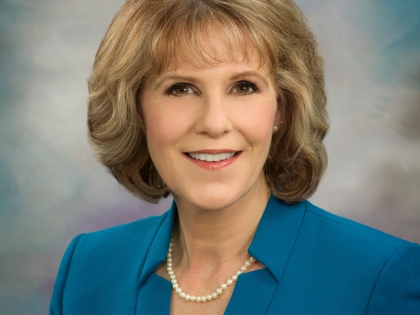
Senator Young Urging Governor to Help Rural Schools
Catharine Young
January 11, 2012
-
ISSUE:
- Education
ALBANY – State Senator Catharine M. Young (R,C,I-Olean) is helping spearhead an effort with other Senators who represent upstate districts, asking Governor Andrew Cuomo to give rural schools extra consideration in the upcoming state budget.
The Governor will release his 2012-13 Executive Budget proposal on January 17.
Senator Young joined 14 of her colleagues in signing the formal letter, requesting a significant boost to rural school aid.
“New York State is unique in the country because the Governor has enormous power over the budget making process, unlike other states. The courts have made it more difficult for the state Legislature to change the Executive’s proposal. The Governor’s leadership to include more rural school funding up front in his plan would help ensure success in the final enacted budget,” Senator Young said.
In December, legislation supported by Senator Young and area Assemblymen Andrew Goodell and Joseph Giglio was passed and signed by the Governor, ensuring a four percent -- or $800 million -- education increase in the upcoming budget that will be distributed to school districts across the state based on an existing progressive formula that gives poorer districts more dollars per student.
“Our letter asked the Governor to present us with a budget plan that recognizes both the sacrifices made by our rural schools and the unique challenges they face,” Senator Young said.
“In 2007, the Campaign for Fiscal Equity lawsuit required the state to give more funding to New York City schools. The state Senate successfully pushed to have an increased allocation for upstate, too, so our schools would not be left out. Consequently, Governor Eliot Spitzer created the Foundation Aid formula as a means to distribute education dollars statewide,” she said.
Despite the expanded education commitment, there are flaws in the current system, according to Senator Young.
“The existing funding formula doesn’t adequately account for the true financial condition of our schools because the actual wealth ratio is not used if it falls below a certain level. When Governor Spitzer established this formula, he placed an artificial limit on what can be considered in each district’s wealth data. We are hoping that through Governor Cuomo’s leadership, our rural schools get a helping hand by utilizing a more accurate calculation,” she said.
“Our region’s schools receive a huge amount of money from the state. Last year, it was well over a half a billion dollars in my Senate district. The total state allocation for schools was $19.4 billion. While we have only 1.77 percent of the state’s students, we receive a higher amount of the state’s entire education funding, totaling 2.63 percent. However, our schools need more assistance to provide the quality of education that our students need and deserve,” Senator Young said.
“Rural school districts are more dependent on state funding because their tax bases are less wealthy than communities that have more local resources. Our schools receive a higher amount of state aid per student than affluent districts, but it is harder for rural schools to supplement their state allocations with local taxes, especially since property taxes already are too high and taxpayers cannot afford increases,” Senator Young said.
“I have many families who live in my district who are struggling to make ends meet, or are seniors trying to survive on fixed incomes. They need a break,” she said.
“Suffocating property taxes have driven jobs, businesses and people from the state. We need to turn the state around so we can grow private sector jobs, get people back to work, develop career opportunities for our young people so they can stay after they graduate, and we can have a brighter future.
“With Governor Cuomo’s partnership, property tax reform is underway. The property tax cap will help limit tax increases, but it makes unfunded mandate relief and adequate funding especially important,” Senator Young said.
“We need to have efficient operations, and many of our school districts are taking steps to be as creative and economical as possible. They are establishing shared services, and some are looking at forming regional high schools that would give more opportunities to students,” she said.
“Due to the state’s $10 billion deficit in 2011 caused by the terrible condition of the national economy, Governor Cuomo proposed school aid cuts. My Senate Majority fought hard in last year’s final budget to successfully secure an additional $272 million in education aid, including $230 million in direct school aid to districts across the state. We also prevented $190 million in cost shifts that were proposed by the Governor that would have placed additional financial burdens on local school districts and taxpayers,” she said.
“This coming year, we face another budget shortfall of at least $2 billion that will have to be solved. It will be another challenging budget process, but I am optimistic that the right priorities will be funded while cutting spending and closing the budget gap,” she said.
“I am hopeful the Governor will listen so that we can protect our taxpayers while meeting our children’s needs,” she said.
Share this Article or Press Release
Newsroom
Go to Newsroom
SAFE Act Ammunition Database Suspended
July 10, 2015